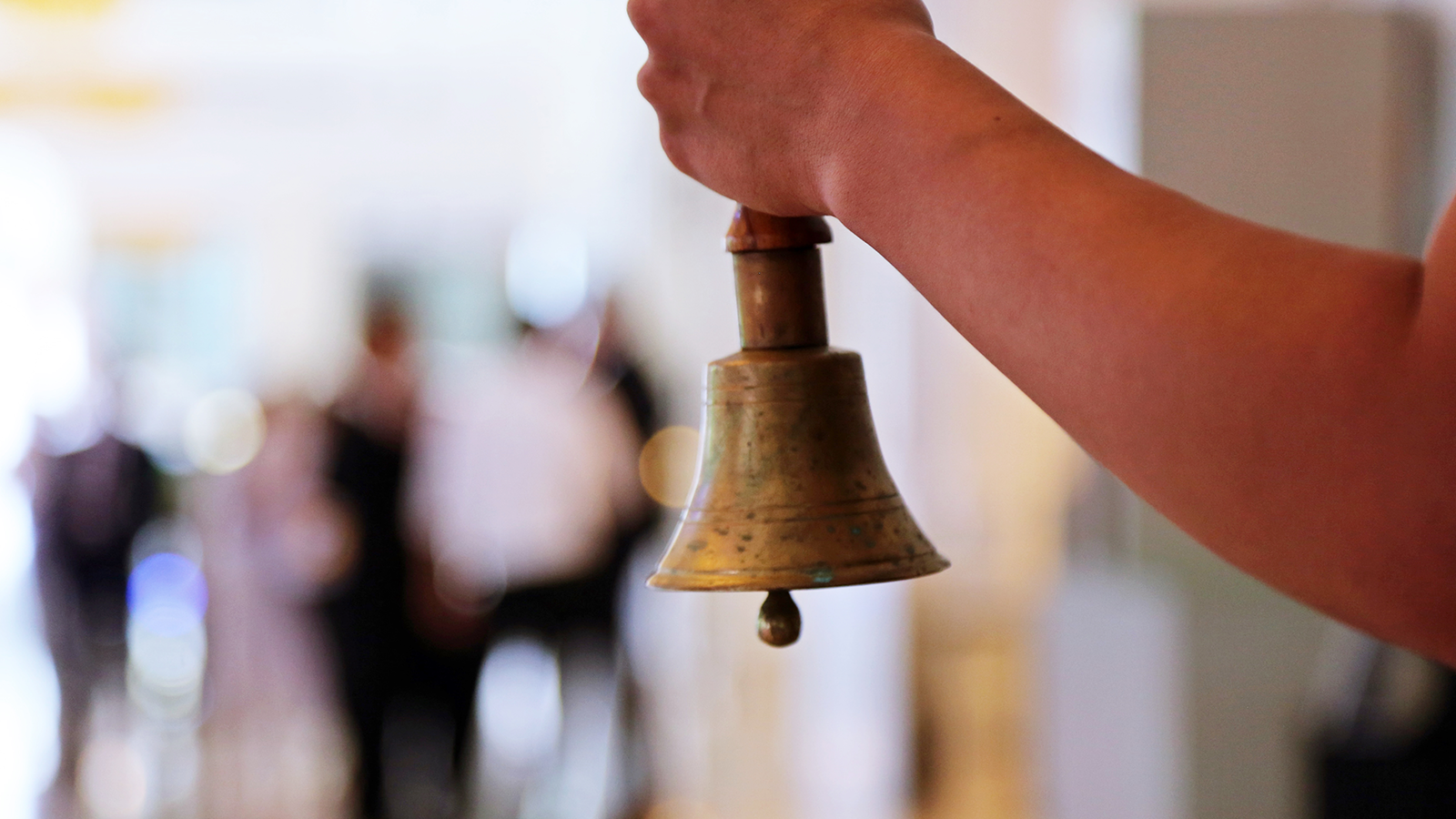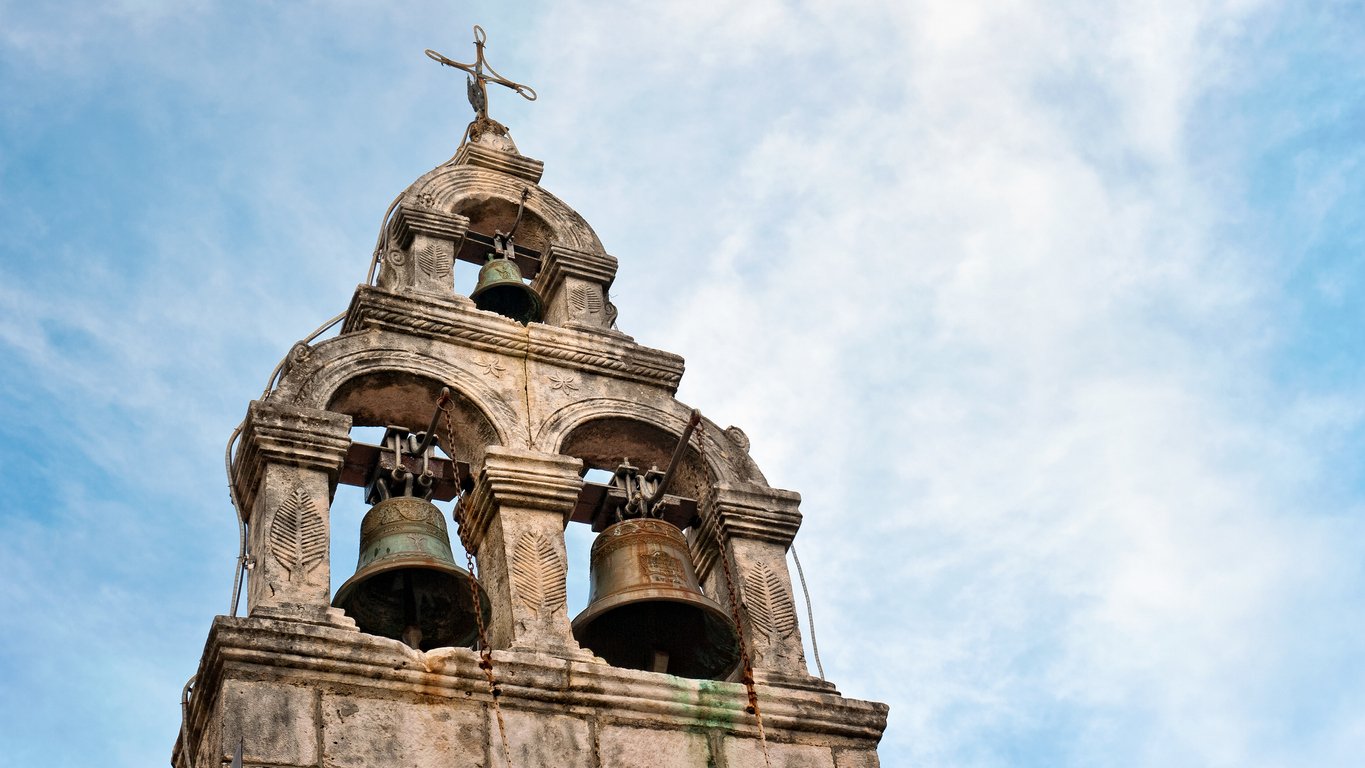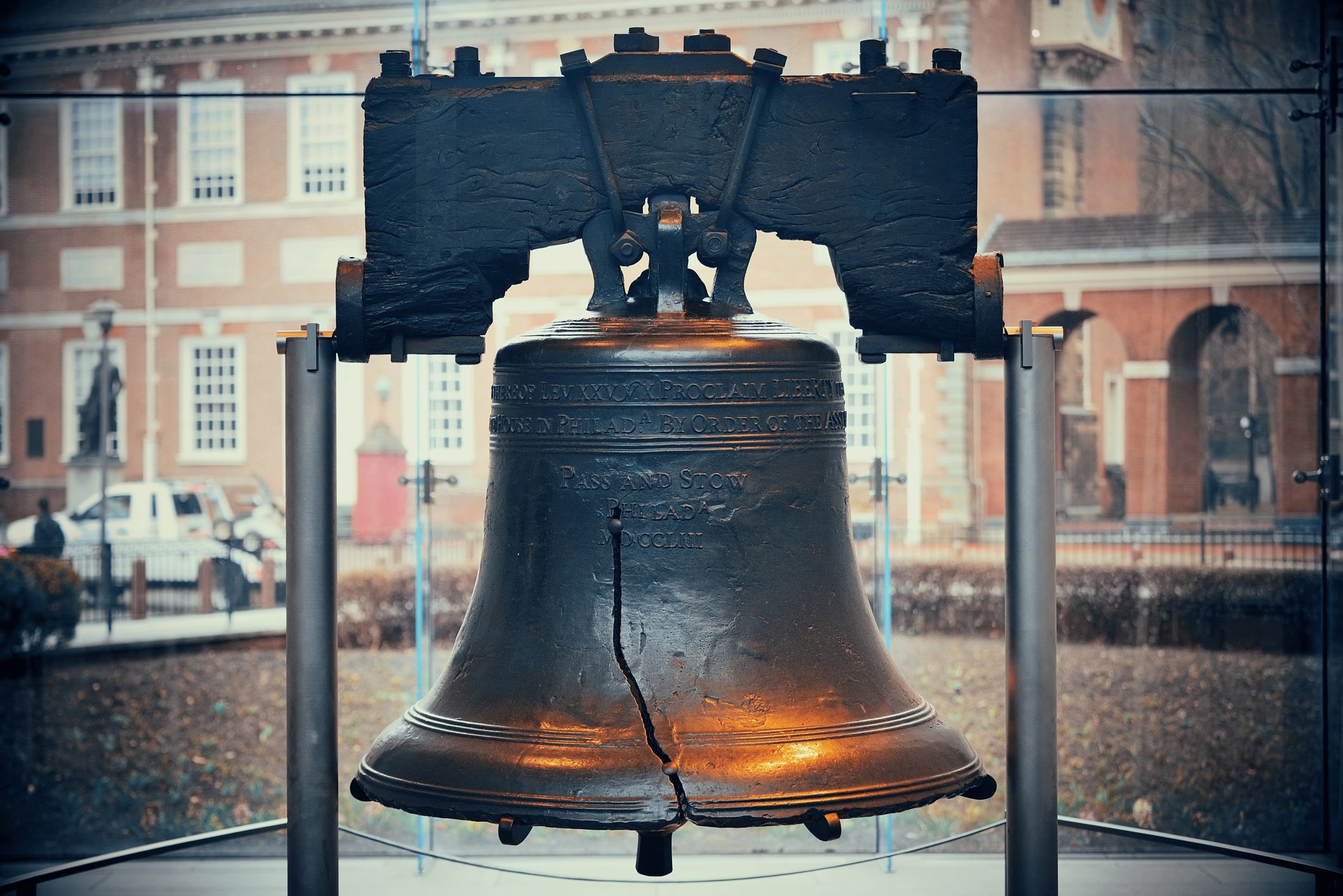
Bells end and begin our classes. In the past, teachers rang hand-held bells to start the school day. The Liberty Bell may be the icon that students know from history, but there are many ways to use bells in the teaching of social studies. Explore with your students how the sound of bells is present in our daily life and in the past.
Historical Bells
Bells herald community events, observances, and worship, and have been used in religious ceremonies or rung for funerals or weddings. Bell towers stand as community monuments to note the hour or sound peals of danger. Clock bells were the public timekeepers in the eighteenth and nineteenth centuries. Bells on the sea and in lighthouses marked the end of watches. Throughout history, they were used to call for help to put out fires, notify of possible attacks, and gather folks to hear important news. From the earliest times, bells were worn by priests, used by soldiers on patrol, and placed around the necks of cattle and sheep. Bells have been used to invoke rain, disperse storms, conjure curses, obstruct demons, and repulse infections. You can easily find connections to social studies in the everyday use of bells.
 Photo: iStock by Getty Images / MarinMtk
Photo: iStock by Getty Images / MarinMtk
The Great Bell of Dhammazedi (named after a Burmese King) from the fifteenth century is believed to be the largest bell ever cast, weighing approximately 330 tons. It was supposedly made of copper, gold, silver, and tin, and encrusted with emeralds and sapphires. The bell was seized by a Portuguese adventurer to melt into cannons; however, the bell sank at the conjunction of the Bago and Yangon Rivers in what is now Myanmar. There have been many failed attempts to find and retrieve the bell by national and international divers, although whether the bell actually existed remains speculation.
The World Peace Bell is the largest swinging bell in the world. Newport, Kentucky hosts this 66,000-pound bell. The bell was first rung on January 1, 2000, and now rings daily at noon. The hope is that when the bell is heard, people will stop for a moment and think about the importance of having world peace.

Photo: iStock by Getty Images / rabbit75_ist
In the Classroom
Divide students into groups to research notable bells: Tsar Bell (largest bell still in existence, Moscow), Pummerin (St. Stephen’s Cathedral, Austria), Great Paul (St. Paul’s Cathedral, London), Big Ben (London), Great Tom (Christ Church, Oxford), the Liberty Bell (Philadelphia), and Little John (Nottingham). Ask students to analyze historical and cultural influences that shaped the meaning of the bells.
- What are the inscriptions on the bells?
- What is the historical significance?
- What do they mean and why are they relevant today?
Additional questions to ask students could be to investigate the costs of making them, the geographic significance of the location, and the civic uses of the bells.
Introduce the poem “The Bells,” by Edgar Allen Poe. Have students explore the types of bells mentioned in the poem and what they represented. Note the words in the poem that represent sounds of bells: tinkling, chiming, twanging, clanging, jingling.
- What other words can you think of that represent bell sounds?
- How do the stanzas represent the journey of life?
Play for students the choral symphony “The Bells” by Sergei Rachmaninoff, which is based off the poem. As students listen, have them compare each of the movements in the symphony to the four stanzas of the poem.
- Do the symphony and the poem evoke the same images in your mind?
Students may be surprised to find out how many ways bells have been used throughout history. Social studies textbooks can often have a dry, repetitive narrative that seems boring to students. Why not introduce the topic of bells and have “ringing” success with interesting lessons?
Active Classroom can aid your classroom with thousands of interactive activities
Access a free trial and start engaging students today
Kay Gandy is a retired professor of 17 years and a retired elementary teacher of 27 years. Her goal is to work with teachers in countries around the world and watch movies in foreign theaters. Her books Mapping is Elementary, My Dear and 50 Ways to Teach Social Studies (June 2021) provide practical lesson ideas for elementary teachers.
There are many items in history, such as bells that aren’t thought of as super important items. Bells themselves are important to history in so many ways, for instance in Japan the first appearances of bells marks the first time bronze casters arrived on the Island. I am a education student at UNI, and have been reading a lot of these articles that I will definitely use when I am a teacher.